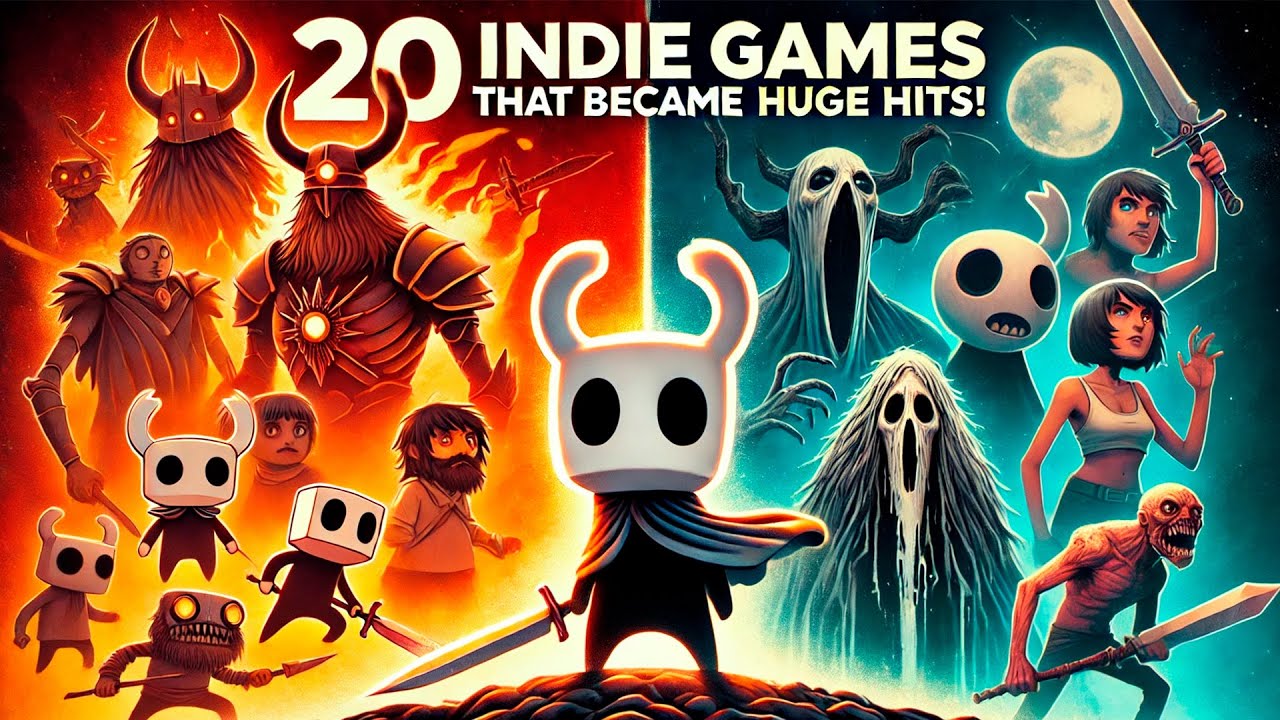
Bus School Park Driver
Popular Games
Last Played

In the video game market, success often seems predictable. Major publishers invest millions in development and marketing, hiring armies of marketers to ensure their projects reach the top of the sales charts. But sometimes, something incredible happens—a game from indie developers, one that no one had even heard of during its development, suddenly becomes a hit. These are the games I will talk about in this video.
The most recent example of such a phenomenon is Helldivers 2. This game, developed by the relatively unknown studio Arrowhead Game, a subsidiary of Sony, seemed doomed to fail. Even the publisher didn't believe in its success, limiting the marketing campaign to a bare minimum. The game was developed on an engine that had already been discontinued before work even began. The development team was unknown to the general public. It seemed like the game would simply go unnoticed.
But then, the unexpected happened. It turned out that the market had long been missing a high-quality co-op shooter. Players enthusiastically embraced Helldivers 2. Its engaging gameplay, constantly updated content, and ironic approach to storytelling quickly made it a hit.
This is a prime example of a game finding its audience. The developers recognized something that many had overlooked: in real-time strategy games, many players enjoy not just fighting but also building and developing infrastructure. They took this idea and perfected it, creating a game entirely focused on construction and automation.
Who would have thought that a simple concept—build a factory to build even more factories—would captivate players so much? But Factorio blew up. Gamers became deeply engrossed in optimizing production chains, creating complex logistics systems, and battling alien life forms threatening their industrial empires. Without a massive marketing campaign, relying solely on word of mouth and positive reviews, the game quickly gained a dedicated fanbase.
When three friends from Australia, working under the name Team Cherry, released their first game in 2017, few expected it to become one of the greatest Metroidvania games of all time.
Hollow Knight is not just a platformer—it's a deep, dark, and mesmerizing tale of the kingdom of Hallownest, filled with mysteries, secrets, and dangerous creatures. Players take control of a nameless knight, exploring an underground world full of enemies, traps, and hidden lore. The game is renowned for its challenging combat system, intricate level design, and incredible atmosphere.
Despite a modest budget and a small development team, the game turned out to be massive: dozens of hours of gameplay, challenging bosses, a deep ability system, and several free expansions made it a true treasure for fans of the genre.
How do you turn a card game into one of the most addictive gaming experiences? The small indie studio MegaCrit, consisting of just two people, found the answer. Their game, Slay the Spire, combines roguelike mechanics with deck-building, creating a truly unique gaming experience.
The premise is simple: choose a hero, climb the mysterious Spire, and defeat all enemies along the way using a deck of cards. However, every run is unpredictable—events, relics, and even the cards themselves appear randomly, forcing players to adapt and adjust their strategies on the fly. Today, this game is considered a genre-defining masterpiece, inspiring dozens of developers to create similar games.
Survival games are often associated with zombies, mutants, or post-apocalyptic settings. But The Long Dark proved that nothing is scarier than nature itself. This game was developed by the Canadian studio Hinterland Studio, with the main goal of creating the most realistic survival experience in the wilderness.
The story begins with a global geomagnetic disaster, leaving the player stranded in the freezing Canadian forests. There are no monsters or post-apocalyptic raiders—just snow, hunger, wild animals, and the endless struggle to stay alive. Unlike other games in the genre, where survival is just one of many mechanics, here it is the central focus of the gameplay. This hardcore approach and the game's unique atmosphere have made it a cult classic among survival enthusiasts.
If someone had said that a co-op shooter about space-mining dwarves would become a hit, no one would have believed them. But the Danish studio Ghost Ship did exactly that, creating one of the most original and entertaining co-op games in recent years.
In Deep Rock Galactic, players take on the role of dwarves working for a megacorporation. Their job? To descend into dangerous caves on asteroids, mine rare minerals, and fight off hordes of insect-like enemies. The gameplay revolves around teamwork: one dwarf digs tunnels, another lights the way, a third protects the team, and the fourth extracts resources. A vast variety of mission types, procedurally generated levels, destructible environments, and a humorous tone have made this game incredibly popular.
Canadian studio Klei Entertainment is known for its unconventional projects, but it was Don't Starve that took them to the next level.
The protagonist finds himself in a strange, dark world full of dangers. The environment is filled with bizarre creatures, mysterious rituals, and inexplicable events. By day, the player gathers resources and builds a base, but at night, the real nightmare begins—monsters come out to hunt, and darkness itself becomes an enemy.
What makes this game truly special is its unique visual style, resembling a living, hand-drawn animation. The secret to Don't Starve’s success lies in its deep gameplay and endless possibilities. Every new playthrough is unique, and over time, the developers added a co-op mode, making the game even more popular.
These games—and many others—have proven that massive marketing budgets and well-known developers aren’t the only paths to success. Sometimes, all it takes is a great idea, a passionate team, and a game that truly resonates with players.
From survival epics to deck-building adventures, indie games continue to shape the industry in ways no one could have predicted.